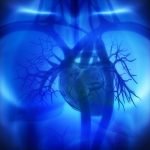Mary F. Shackelton, MPH, ND
Hormone balancing for women usually includes consideration of progesterone and estrogen levels, and the management of symptoms resulting from deficiencies or excesses of each hormone. However, testosterone is of significance and important for clinicians to take into account when evaluating the female patient. Androgen disorders fall into two categories: androgen excess and deficiency. These collectively affect between 5% and 10% of all women.
Testosterone Synthesis/Metabolism
In males, testosterone is secreted by the testes and adrenal cortex. Synthesis occurs in the Leydig cells of the testes in response to lutenizing hormone (LH). Women have at least 3-4 times less testosterone than the healthy male. Testosterone in females is secreted mainly by the ovaries and adrenal glands; however, 50%-60% is derived from the peripheral conversion of the prehormones androstenedione and DHEA. Testosterone produced in the ovaries stimulates follicle-stimulating hormone (FSH) secretion (causing follicular growth) and IGF-1 production, which increases granulosa cell aromatase to catalyze the conversion of testosterone to estradiol.
Testosterone, once secreted, is almost entirely bound to transport proteins and is present in the circulation in three forms: free (unbound), weakly bound to albumin, and tightly bound to sex hormone-binding globulin (SHBG). Free testosterone is biologically active, and the testosterone bound to albumin easily can be activated by rapid dissociation from albumin.
Teens and young adults experience the highest levels of testosterone, and levels decline with age: In fact, levels drop 2% a year each year after the age of 30. By the age of 40, testosterone is half of what it was at age 20. After menopause, testosterone levels remain stable.
Excess Androgen Symptoms
Acne The clinical picture of excess androgens usually includes acne. Menarche is often when acne develops, and it can continue into adulthood during which it should serve as a strong indicator of elevated testosterone levels. Hormone evaluations should be considered in cases of early-onset acne, stubborn cases of acne, acne that has relapsed and acne that continues beyond the second decade.
Hirsutism Hirsutism is one of the most devastating symptoms female patients struggle with. Often, women have become so skilled at hair removal that a clinical exam may reveal no excess hair growth. It is important for clinicians to ask female patients how much time is spent on hair management. Unwanted hair growth occurs in areas where hair follicles are most sensitive to the influence of testosterone – face, chin, jawbone, upper lip, cheeks, the periareolar region, midline of chest, abdomen and sacrum. Elevated free testosterone levels confirm the cause of hirsutism; however, serum levels for approximately 25% of women with varying degrees of hirsutism fall within the female reference range. It is likely that women struggling with this symptom have elevated levels of 5-alpha reductase, which catalyzes the conversion of testosterone to dihydrotestosterone (DHT). Once DHT is present in the skin, it can act on the hair follicle to stimulate hair growth. Women of different ancestries express testosterone differently. For example, women from Mediterranean countries will experience more hair growth while their testosterone is well within the normal range, whereas women from Scandinavia will experience zero to little hair growth with lab values similar to that of the Mediterranean women.
Alopecia Androgenic alopecia can occur in pre- or post-menopausal women. Hair loss is noticed at the vertex, crown or temples and occurs at variable rates. In general, elevations in testosterone will cause hair thinning, but complete baldness rarely occurs. Both DHT and DHEA can exert their effects on the hair follicle, shortening the growth cycle.
Disorders of Elevated Testosterone
Polycystic Ovary Syndrome (PCOS) PCOS is the most common endocrine condition caused by elevated testosterone, and features symptoms of acne, hirsutism, alopecia in addition to anovulatory menstrual cycles, amenorrhea, acanthosis nigricans, obesity, cardiovascular disease and insulin resistance. Approximately 5%-10% of all women of reproductive age have PCOS and, despite what most practitioners think, evidence of polycystic ovaries are not diagnostic of this condition. Rather, hyperandrogenism is required criteria for diagnosis of the condition (AACE, 2005).
Diabetes Women who have hyperandrogenism and chronic anovulation also have insensitivity to their own insulin and thus insulin resistance, which increases one’s risk for non-insulin-dependent diabetes mellitus (NIDDM). It is unclear whether insulin resistance causes elevated testosterone or vice versa. Insulin resistance, a common feature of PCOS, and the resulting hyperinsulinemia causes a decrease in SHBG, which leaves testosterone unbound and free in the peripheral circulation. Additionally, low SHBG is independently associated with high triglycerides, low HDL and elevated apolipoprotein B (Onat et al., 2007).
Hypertension Controversy surrounds the role of testosterone in hypertension in women. Women with PCOS who have elevated testosterone also have a higher prevalence of obesity and insulin resistance, which are directly correlated to having hypertension. Chen et al. (2007) found that hyperandrogenemia in women with PCOS is associated with elevated blood pressure independent of age, insulin resistance, obesity or dyslipidemia.
Endometrial cancer Postmenopausal women are at greater risk of endometrial cancer if elevations in circulating testosterones are present. The effect of elevated androstenedione and testosterone levels on disease risk seems to be mediated mainly through their conversion to estrogens (Lukanova et al., 2004).
Congenital Adrenal Hyperplasia (CAH) CAH, seen in roughly 1 in 15,000 births, is a collective term for a number of inherited enzyme deficiencies that catalyze the synthesis of cholesterol to cortisol. CAH is commonly found in women of Northern European and Scandinavian descent, the Ashkenazi Jews, Alaskan Eskimos and Hispanics. In the majority of cases, it is a deficiency or absence of adrenal enzyme 21-hydroxylase. The lack of this enzyme results in accumulation of cholesterol precursors that are converted instead to sex steroids. The 21-hydroxylase enzyme is encoded by the CYP21 gene. More than 50 mutations of CYP21 have been identified, of which about 15 account for a large majority of 21-hydroxylase cases. In this condition, adrenal hyperplasia results from overproduction of the adrenocorticotropic hormone (ACTH) from the pituitary secondary to insufficient negative feedback from the adrenal cortex. Evaluation of this disorder requires an ACTH stimulation test, and measurement of 17-alpha hydroxyprogesterone at baseline and 60 minutes after ACTH administration (Hudson, 1996; Lee, 2001).
Hyperthecosis The term “hyperthecosis” refers to the presence of pockets of luteinized theca cells in the ovarian stroma – the ovarian interstitial cells differentiate into active luteinized stromal cells. These pockets of luteinized theca cells are scattered throughout the stroma of the ovary, rather than being confined to areas around cystic follicles as in PCOS. The result is greater production of androgens. Why hyperthecosis occurs is not known.
The clinical features of hyperthecosis are similar to those of PCOS. However, women with hyperthecosis have more severe hirsutism, requiring them to shave daily, and they are much more likely to be virilized. Clitoral enlargement, temporal balding, deepening of the voice, amenorrhea and anovulation are common features of hyperthecosis. Hyperthecosis has a strong familial occurrence and can occur in postmenopausal women.
Low Testosterone
Unlike their male counterparts, who often express concern about a decrease in testosterone levels, women are generally unlikely to seek medical attention for low levels of testosterone. While low testosterone comes with age, a number of clinical signs as well as conditions are related to having low testosterone.
- Osteoporosis Osteoporosis is strongly linked with low testosterone. Testosterone is likely to have direct and indirect inhibitory effects on human osteoclast formation and bone resorption, whereas the effect of estradiol on osteoclast precursors and osteoclasts seems to be mediated by osteoblastic cells (Lerner, 2006).
- Low libido Low libido is a common complaint of female patients in general; while the causes are multifactorial, it is very important to evaluate adrenal function as well as free and total testosterone levels. The majority of research on testosterone replacement therapy (TRT) has been conducted on post-menopausal women and does not offer insight into the therapeutic benefit of TRT for women who have low testosterone from other causes. Additional research is needed on TRT in a younger female demographic to determine the impact on libido.
- Anorexia nervosa In addition to numerous physical problems that can result from low testosterone, deficient testosterone can lead to mental/emotional disorders as well. Low androgens are found in women suffering from anorexia nervosa and research confirms that an inverse relationship exists between free and total testosterone and an increase in anxiety and depression (Miller et al., April 2007). Additionally, free testosterone has been found to be lower in women with clinically significant anxiety and depression who demonstrate eating-disordered thinking (Miller et al., June 2007). Complicating matters, oral birth control pills are often prescribed for women suffering from amenorrhea secondary to anorexia, which lowers testosterone even further. This can exacerbate a low bone density in this population of patients and warrants careful monitoring.
- Other Other symptoms that female patients with low levels of testosterone present with include low energy, decreased strength and endurance, and decreased cognitive ability. While the sex hormones influence these symptoms, it is the astute clinician who considers a potential decrease in testosterone as causative or implicated.
Naturopathic Care
The skilled ND relies on multiple modalities in approaching any patient, and designing an individualized treatment plan for a woman who has elevated or decreased androgens is no different. Suggestions for addressing testosterone levels specifically include the following.
Lowering Testosterone:
- Serenoa repens, 300mg BID (larger doses for women with higher BMI) (Bayne et al., 1999; Vacher et al., 1995).
- Urtica dioica, 150mg BID (Rosner, 1990).
- Phosphatidylserine , 200mg at bedtime.
- Adrenal adaptogens can support a maladapted and stimulated adrenal gland to improve hormone secretion. Adapatogens such as Eleutherococcus, Glycyrrhiza and Ashwaganda are helpful for balancing cortisol secretion, which can decrease androgen production.
Increasing Testosterone:
- Natural testosterone compounded, 1-3mg.
- It is commonly thought that the saponins from the Tribulus terrestris plant are capable of increasing testosterone by increasing gonadotropin-releasing hormone (GnRH), which in turn stimulates the production of LH and FSH. However, studies to confirm this are scarce. A recent study, albeit a small sample (21 men), confirmed that Tribulus terrestris steroid saponins possess neither direct nor indirect androgen-increasing properties (Neychev and Mitev, 2005).
- Adrenal support is a valuable therapeutic goal, and will aid in increasing testosterone levels to the physiologic range. Supporting the adrenal glands requires 1) glycemic support to maintain stable blood sugar; 2) mental/emotional support that includes a strong plan for how patients will get necessary assistance; 3) addressing any chronic or hidden physical pain; and 4) adrenal glandulars for patients struggling with adequate adrenal function.
 Mary F. Shackelton, MPH, ND graduated from SCNM in 1998. She also has a Masters degree in public health from San Diego State University, and was the naturopathic physician on staff for the first disabled acsent of Mt. Everest in 1998. Dr. Shackelton is co-founder and medical director of Insulite Laboratories, a supplement company dedicated to reversing disorders related to insulin. Visit www.allnaturaldoc.com.
Mary F. Shackelton, MPH, ND graduated from SCNM in 1998. She also has a Masters degree in public health from San Diego State University, and was the naturopathic physician on staff for the first disabled acsent of Mt. Everest in 1998. Dr. Shackelton is co-founder and medical director of Insulite Laboratories, a supplement company dedicated to reversing disorders related to insulin. Visit www.allnaturaldoc.com.
References
American Association of Clinical Endocrinologists (AACE). Position statement on metabolic and cardiovascular consequences of PCOS, Endocrine Practice April 11(2), 2005.
Bayne CW et al: Serenoa repens (Permixon): a 5alpha-reductase types I and II inhibitor – new evidence in a coculture model of BPH, Prostate Sep 1;40(4):232-41, 1999.
Chen MJ et al: Relationship between androgen levels and blood pressure in young women with polycystic ovary syndrome, Hypertension Jun;49(6):1442-7, 2007.
Hudson T: Androgens and women’s health, Townsend Newsletter April;(153):97-99, 1996.
Lee H: CYP21 mutations and congenital adrenal hyperplasia, Clin Genetics 59:293-301, 2001.
Lerner UH: Bone remodeling in post-menopausal osteoporosis, J Dent Res Jul; 85 (7):584-95, 2006.
Lukanova A et al: Circulating levels of sex steroid hormones and risk of endometrial cancer in postmenopausal women, Int J Cancer Jan 20; 108(3):425-32, 2004.
Marshall K: Polycystic ovary syndrome: clinical considerations, Alt Med Rev 6(3):272-292, 2001.
Michael H et al: Estrogen and testosterone use different cellular pathways to inhibit osteoclastogenesis and bone resorption, J Bone Miner Res Dec; 20(12):2224-32, 2005.
Miller KK et al: Androgen deficiency: association with increased anxiety and depression symptom severity in anorexia nervosa, J Clin Psychiatry Jun;68(6):959-65, 2007.
Miller KK et al: Androgens in women with anorexia nervosa and normal-weight women with hypothalamic amenorrhea, J Clin Endocrinol Metab Apr; 92(4):1334-9, 2007.
Neychev VK, Mitev VI: The aphrodisiac herb Tribulus terrestris does not influence the androgen production in young men, J Ethnopharmacol Oct 3;101(1-3):319-23, 2005.
Onat A et al: Serum sex hormone-binding globulin, a determinant of cardio metabolic disorders independent of abdominal obesity and insulin resistance in elderly men and women, Metabolism Oct;56(10):1356-62, 2007.
Prager N et al: A randomized, double-blind, placebo-controlled trial to determine the effectiveness of botanically derived inhibitors of 5-alpha-reductase in the treatment of androgenetic alopecia, J Altern Complement Med Apr;8(2):143-52, 2002.
Rosner W: The functions of corticosteroid-binding globulin and sex hormone-binding globulin: recent advances, Endocr Rev 11:80-91, 1990.
Vacher P et al: The lipidosterolic extract from serenoa repens interferes with prolactin receptor signal transduction, J Biomed Sci Oct;2(4):357-365, 1995.





